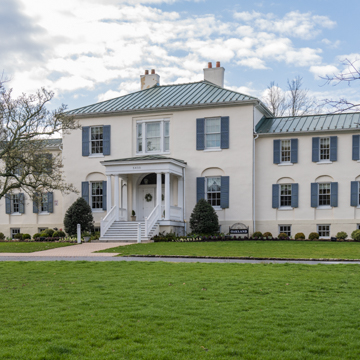Among the most sophisticated early-nineteenth-century houses in Howard County is this three-part, rough-cast stone neoclassical dwelling designed and built for Charles Sterrett Ridgely, land developer and politician. It was later purchased by Baltimore merchant Robert Oliver for his son, Thomas Oliver, who accumulated an estate of over a thousand acres. In 1838 the buildings were described as “of the most costly, substantial and elegant kind.” Measuring 110 feet in length with stone walls 26 inches thick, the first floor then comprised a large hall, six rooms, and two pantries and incorporated central heat, a rare luxury in its day.
One of the most extensive estates in the county, Oakland included outbuildings, tenanted farmsteads, a mill complex, and a manufacturing village (still extant is Oakland Mills Blacksmith House and Shop; 5471 Old Columbia Road). An on-site quarry supplied the stone to build the house and other buildings such as the extant cross-gable-roofed washhouse. Oakland was one of many farm complexes that gave way to the development of Columbia, although happily this house was spared. Restored, it was opened to the public in 1988.















